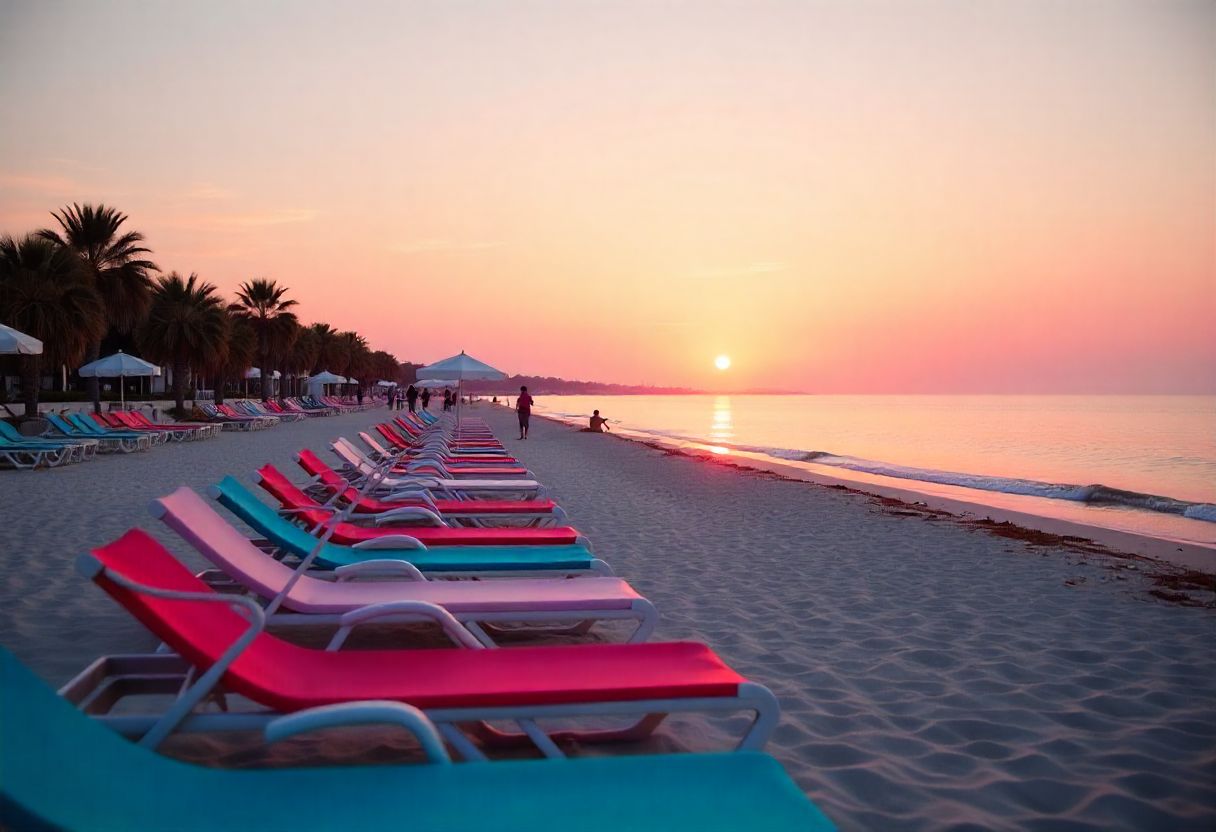Thursday, July 24, 2025
A bustling tourist hub, Mamaia — Romania’s jewel on the Black Sea — is now watching its golden days disappear. Tourism in Romania has been badly affected, as latest data released by Eurostat on the proportion of people who were able to afford a one-week vacation, at home or abroad, shows that the share of Romanians in this regard was of 26.6% last year. By comparison, citizens in Sweden, Luxembourg and the Netherlands receive more annual leave, a total of 85% of their populations can afford to go on vacation every year.
This has taken a heavy toll on some of Romania’s (in)famous seaside names, with the Mamaia resort no longer attracting the same number of tourists. Now the resort looks like something out of a ghost town, with beach full of empty sunbeds, and a stark contrast to the hotel’s heyday, as the fortunes of Romania’s tourism industry takes a serious turning.
What’s Behind the Empty Sunbeds?
Mamaia has experienced an abrupt decline in tourism for several reasons, ranging from global events to local policies. At the heart of the problem, say radio programmers, is Romania’s economic crisis, as inflation strikes ordinary citizens and they cut back on spending for recreation. But the biggest blow for local tourism has been the government in Bucharest’s decision to reduce the value of the holiday vouchers by 50 per cent. The program, once a lifeline for many residents, also made vacations cheaper for citizens who could pay with vouchers for lodging, food and entertainment at participating venues throughout the country.
This sudden fall of these vouchers has dealt a big blow to local tourism. Cvipetting amid pandemic: – Photo: Len Haworth On 6 May 2024 some €95 million worth of holiday vouchers were sold, says the travel agents, while this year the figure has slumped to €9 million. This steep decrease was very visible in the touristic industry, particularly in Mamaia.
The Struggles of Mamaia Hoteliers
Mamaia’s hoteliers are already feeling the squeeze. Bookings have plummeted, says Felicia Simion, who owns a hotel here, and instead of closing for Russian New Year, on Jan. 14, tourists are now staying two or three days, not several weeks as they used to.
“You can easily see that tourism has dropped. I have shorter bookings and fewer clients,” says Simion, emphasizing the pain from local businesses. ‘And hotels have had to think again about their pricing. A room with breakfast is, for example, 350-400 Leu (€69-79) in July, but all-inclusive packages that include both breakfast, the sunbeds and the drinks may go from 700 to 850 Leu (€138-168) per night.
Yet even with such packages, hotels say they are having trouble getting visitors. Empty sunbeds on the beach are a sign of the silent desperation gripping Mamaia’s hospitality sector.
Domino Effect: How Economic Trends Impact More Than Just the Rutgers Community
The troubles of Mamaia are indicative of a larger problem in Romania, where an increasingly high cost of living and economic woes have turned vacationing into a luxury that the majority of citizens can’t afford. Tourism is a shadow of its prewar self, when coastlines and mountain resorts were teeming with visitors. For Romanians, not being able to splurge on entertainments has local businesses losing money and the travel industry as a whole suffering.
International effects, especially destabilization in the Ukraine war and so on, have also had an impact, with a number of possible tourists choosing to go elsewhere to avoid geopolitical risks.
Can Romania’s Tourism Industry Recover?
The Romanian state must urgently find a way to relaunch the local tourism. Details of what the future of the holiday vouchers scheme may look like are yet to be determined – but some industry experts argue that the best option could be to bring back the holiday voucher at face value to spur on domestic travel. And enough people think that Romania’s economic recovery should be accompanied by a sustainable strategy for tourism to suit both the locals and the environment.
To become a popular holiday destination for Romanians and foreigners, Mamaia and the other Romanian resorts have to take into consideration the poverty rate factor, to invest in infrastructure, and to conceive alternative ways of advertising.
A Romanian Holiday, On the Rocks
So as Romania faces these challenges, it’s apparent that the image of domestic tourism is changing. It is unclear whether they will continue to back the industry, or whether they will look elsewhere for their holiday experiences. One thing is clear, though: Romania has to change, it has to come up with solutions to generate its tourism and not to continue going down.
So far, those who do manage to get to Mamaia will find a more subdued, peaceful escape. But for how long?
